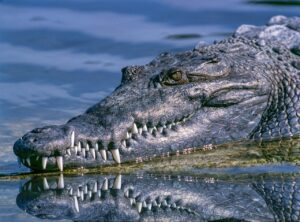Regeneration in the animal kingdom is a remarkable phenomenon, providing insights into evolutionary adaptations and survival strategies. It serves as a bold reminder that within the natural world lies an array of life forms sculpted by millennia of adaptation, each equipped with unique mechanisms to counteract the trials of existence. The secrets behind these abilities are not only fascinating from a scientific perspective but also hold potential applications for medicine and technology in human life.
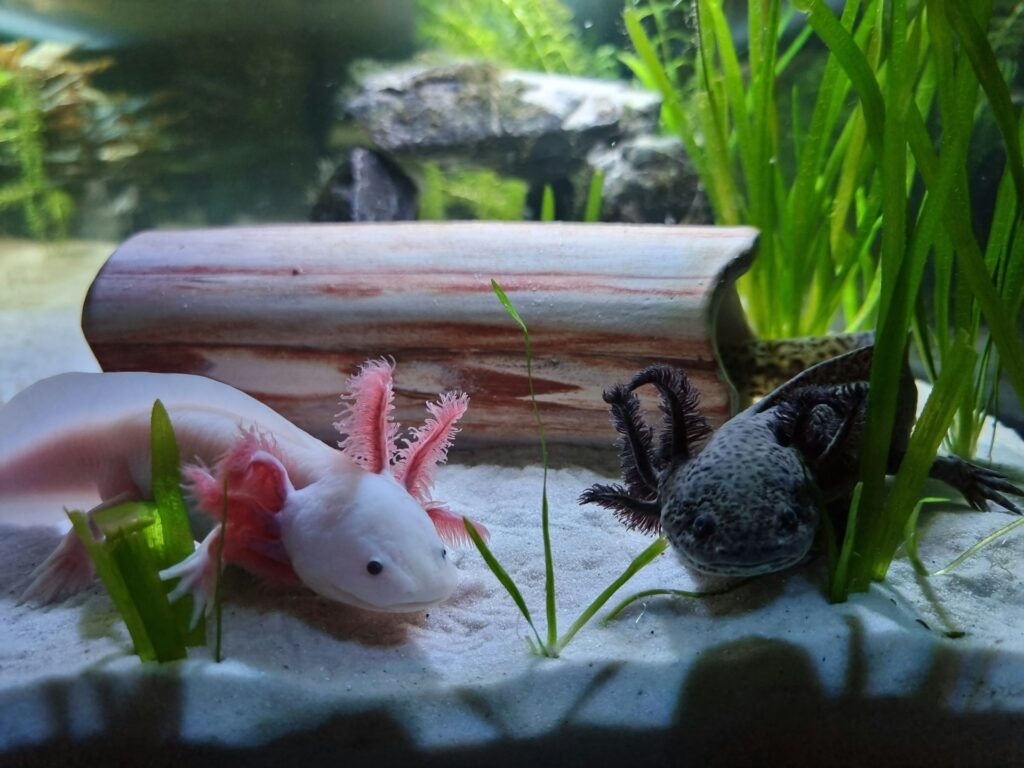 Pin
Pin Image by TK from Unsplash
Table of Contents
Top Animals That Can Regrow Body Parts
1. Axolotl: The Mexican Marvel
The axolotl, a unique aquatic salamander native to the lakes of Mexico City, is renowned for its extraordinary regenerative abilities. Unlike most amphibians, which undergo metamorphosis, axolotls remain in their larval form throughout their lives, retaining their external gills and aquatic lifestyle.
 Pin
Pin Image by Joaquín Enríquez from Pixabay
Their most remarkable trait is their capability to regrow various body parts, including limbs, spinal cords, hearts, and even sections of their brains. This regeneration process is not just a simple repair; it involves complex biological mechanisms that enable the axolotl to replace damaged tissues with functional, fully integrated replacements.
Scientists are intensely studying axolotls to uncover the secrets behind their regenerative prowess, hoping to unlock insights that could revolutionize regenerative medicine in humans. The potential applications range from developing treatments for spinal cord injuries to growing new tissues for organ transplants. As research progresses, the axolotl continues to inspire wonder and hope in the field of biology and medicine, solidifying its status as a true marvel of nature.
2. Planarian: The Regeneration Wizard
Planarians are remarkable flatworms known for their extraordinary regenerative capabilities. Found in both freshwater and marine environments, these creatures possess an astonishing ability to regenerate any part of their body.
 Pin
Pin Image from Wikipedia
When a planarian is cut into pieces, each piece has the potential to develop into a complete, functional worm, a phenomenon attributed to the presence of specialized cells called neoblasts.
Neoblasts act like stem cells, proliferating and differentiating into various cell types necessary for regeneration. This process involves the formation of new tissues, including muscle, nerve, and skin cells. Additionally, planarians retain a simple nervous system, which reorganizes itself during regeneration, enabling the new worm to function normally. This remarkable ability not only fascinates scientists but also offers valuable insights into developmental biology and regenerative medicine. By studying planarians, researchers hope to unlock the underlying mechanisms of regeneration, potentially applying these principles to human health and healing.
3. Starfish: The Arm Grower
Starfish, or sea stars, are marine echinoderms renowned for their remarkable regenerative abilities. When a starfish loses an arm due to predation or injury, it can regenerate the lost limb over time.
 Pin
Pin Image by science photo library
The regeneration process is not only limited to arms; in some instances, a single severed arm, if it includes part of the central disc, can regenerate into an entirely new starfish.
This amazing regeneration is facilitated by specialized cells that migrate to the site of the injury and differentiate into various cell types, forming new tissues, including muscle and structural components. The regenerative process can take several months, and the new arm often starts as a small bud before gradually growing to match the original size. Starfish also use this ability as a survival strategy, allowing them to escape predators. Their capacity to regenerate has intrigued scientists, providing insights into tissue regeneration and potential applications in regenerative medicine for humans.
4. Spiny Mouse: The Mammalian Regenerator
The African spiny mouse (Acomys spp.) stands out among mammals for its remarkable regenerative abilities. Unlike most mammals, which have limited regenerative capacity, spiny mice can regrow skin, hair, and even cartilage after injury.
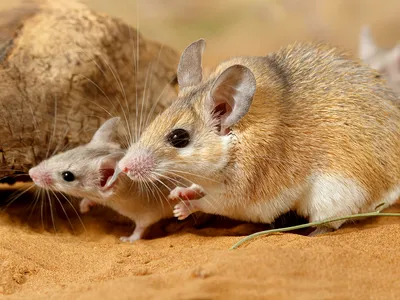 Pin
Pin Image from Britannica
When these mice experience wounds, particularly in their skin, they can regenerate tissues rapidly and effectively.
A significant feature of their regeneration is the unique way spiny mice can shed their skin in response to a threat, allowing them to escape potential predators. The skin can later regrow from specialized cells that migrate to the wound site. This process includes rebuilding hair follicles and restoring pigmentation, ensuring the regenerated skin closely resembles the original.
Spiny mice can regenerate parts of their cartilage, which is vital for the flexibility of joints. Research into their regenerative processes holds potential for advancements in regenerative medicine, providing insights into healing mechanisms that could be applied to human therapies.
5. Hydra: The Immortal Jelly
Hydras, small, freshwater cnidarians, exhibit astonishing regenerative capabilities that have fascinated scientists for centuries. These organisms can regenerate their entire body from just a small fragment, making them effectively immortal under optimal conditions.
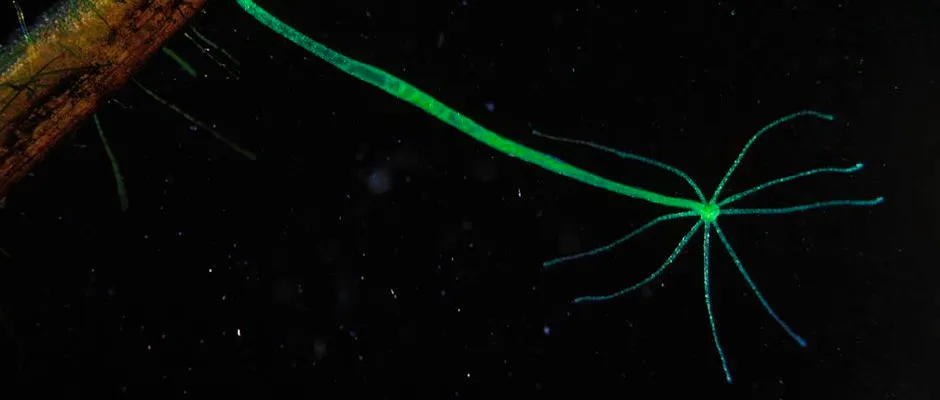 Pin
Pin Image from GettyImages
When a hydra is cut into pieces, each fragment can develop into a fully functioning individual, complete with a mouth, tentacles, and digestive system.
One reason behind this remarkable ability is the presence of a unique population of stem cells in hydras. These stem cells retain their developmental potential throughout the organism’s life, enabling them to differentiate into various cell types necessary for regeneration. Additionally, hydras exhibit minimal aging signs, largely thanks to their efficient cellular repair mechanisms and high rates of cell turnover.
This regenerative prowess has implications for scientific research, particularly in understanding cellular aging and tissue regeneration, potentially offering insights that could inform medical advances in regenerative therapies for humans.
6. Lizards: The Tail Droppers
Many lizard species possess an extraordinary ability to regenerate their tails, a survival adaptation that has evolved to help them escape predators. When threatened, some lizards can autonomously shed their tails in a process known as autotomy.
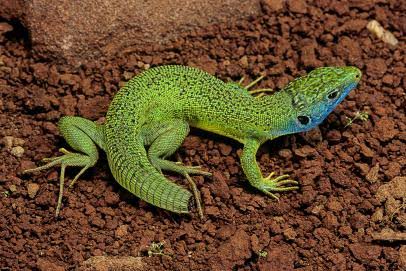 Pin
Pin Image by Paul Starosta from Pinterest
This distraction allows the lizard to evade capture, as the detached tail continues to wriggle, drawing the predator’s attention.
Once the tail is lost, lizards have the remarkable capability to regenerate it over several weeks or months. The regenerated tail, however, differs from the original in structure and composition; it typically lacks vertebrae and is instead made of a cartilaginous rod, resulting in a different appearance.
Research into lizard tail regeneration has illuminated essential biological processes, including stem cell activation and tissue remodeling. Understanding these mechanisms may have significant implications for regenerative medicine, potentially informing treatments for injuries and degenerative diseases in humans.
7. Sea Cucumber: The Organ Expeller
Sea cucumbers, echinoderms found on ocean floors, exhibit a fascinating defense mechanism: the ability to expel their internal organs when threatened by predators. This process, known as evisceration, allows the sea cucumber to rid itself of vital organs, creating a distraction and potentially allowing it to escape.
 Pin
Pin Image by Kevin Mc Loughlin from Pixabay
When a predator approaches, the sea cucumber contracts its body, forcing its internal organs, including the intestines and respiratory tree, out through its anus. The expelled organs may continue to move, distracting the predator while the sea cucumber makes its getaway. Remarkably, sea cucumbers are capable of regenerating the lost organs in a few weeks.
This regeneration process showcases the resilience of these creatures, as they can recover fully from such a drastic defense tactic. Studying sea cucumbers not only sheds light on their unique biology but also enhances our understanding of regeneration, which holds promise for advancements in medical science.
How Can Some Animals Heal So Fast?
Have you ever wondered how certain creatures seem to bounce back from injuries almost overnight? Nature has bestowed select animals with incredible regenerative abilities that allow them to heal at astonishing rates. These capabilities stem from complex biological processes, particularly the activity of stem cells.
Consider the case of a starfish that loses an arm or an axolotl that regenerates a limb. Instead of developing scar tissue like humans do, these extraordinary animals generate new growth, thanks to their unique biology. When an injury occurs, specialized stem cells are activated, multiplying and turning into the specific cell types needed to fix the damage. This means they don’t just heal wounds; they regenerate entire limbs, tails, and even organs with remarkable precision.
Animals like planarians, axolotls, and certain jellyfish have honed this talent over millions of years. Their evolutionary adaptations allow them to activate complex pathways for tissue regeneration, enabling them to reconstruct their bodies without the complications of scar formation.
The regeneration process is driven by essential signaling pathways rich in growth factors and hormones. These chemical messengers orchestrate the healing process, guiding cells to their respective tasks. Additionally, these animals often possess immune systems that prevent excessive inflammation, creating an ideal environment for rapid recovery.
Studying these incredible regenerative processes is not just a natural wonder but holds promise for human medicine. Researchers are probing these mechanisms to unlock secrets that could one day revolutionize wound healing and tissue engineering, allowing us to heal more like a starfish rather than a mammal. Understanding how these remarkable organisms thrive after injury might one day change the way we tackle our own healing processes.
The Secret Life of Regenerative Animals
Incredible powers of restoration reveal secrets that go beyond mere survival.
Take the starfish, for instance. These ocean dwellers can perform a remarkable magic trick: they can reproduce asexually by regrowing lost arms. It’s not just a survival strategy; it’s nature’s way of ensuring that life goes on, even in the unpredictable tides of the sea.
Then there are lizards, masters of distraction. When threatened by a predator, they have a clever escape plan: shedding their tails! This remarkable feat not only allows them to dart away to safety, but that lost tail continues to wiggle, enticing the predator while the lizard makes its getaway.
Regeneration in the animal kingdom is a captivating blend of adaptation and ingenuity. It’s a reminder that life finds a way, transforming adversity into opportunity.
Why Do Some Animals Regenerate and Others Don’t?
Why can some animals bounce back from injuries like nothing ever happened, while others seem helpless? The secret lies in a fascinating web of evolutionary history, habitat, and lifestyle!
For creatures like the axolotl, which dwells in murky waters, the risk of injury is a daily reality. Over generations, these resilient beings have honed their remarkable regenerative skills, mastering the art of regrowing limbs and even parts of their hearts. Their environment demands it—survival relies on the ability to heal quickly and efficiently.
In contrast, consider animals that occupy safer niches or have fewer predators. They may not face the same high stakes, leading to a lesser need for regeneration. Evolution often favors traits that enhance survival, and in calmer waters, the urgency for regrowth may simply fade.
What We Can Learn from Animals That Regenerate
Have you ever wished for a quick fix to heal cuts or injuries? What if we told you that some animals can regrow entire limbs, and studying them might hold the key to revolutionary treatments for humans? Amazing creatures like starfish, axolotls, and salamanders aren’t just wonders of nature; they’re living laboratories packed with insights into healing and regeneration.
Researchers are diving deep into the biology of these remarkable animals, uncovering the secrets behind their extraordinary abilities. These studies reveal how these creatures heal wounds and regenerate tissues, sparking excitement about the potential applications in human medicine. Imagine harnessing the power of these natural processes to enhance wound healing, repair damaged tissues, or even slow down the aging process.
The quest for knowledge doesn’t stop at healing. By understanding how these animals manage to restore themselves, scientists are paving the way for advanced therapies that could transform healthcare. From innovative treatments for injuries to breakthroughs in regenerative medicine, the lessons from these fascinating beings offer a glimpse into a future where healing could become faster and more effective.
The Science Behind Animal Regeneration Explained
Regeneration is a biological phenomenon wherein an organism can replace lost or damaged tissues, organs, or even entire structures. This remarkable ability is primarily facilitated by stem cells, which are undifferentiated cells capable of self-renewal and specialization into various cell types. The regeneration process occurs through a series of well-coordinated and intricate mechanisms that involve genetic regulation and molecular signaling pathways.
Activation of Stem Cells
When an organism experiences an injury, such as the loss of a limb or tissue damage, a cascade of cellular responses is initiated. This response often begins with the local inflammation that occurs post-injury, which helps to signal the need for regeneration. In many regenerating species, specialized cells called blastema cells form at the site of injury. These cells typically originate from the activation of local stem cells, which proliferate in response to injury signals.
The activated stem cells undergo a process known as “differentiation.” Differentiation is the process by which stem cells evolve into specialized cell types—such as muscle cells, nerve cells, or cartilage cells—necessary for rebuilding the lost tissue. This transformation is influenced by various intrinsic and extrinsic factors, including the local microenvironment, signaling molecules, and the presence of growth factors.
Genetic and Molecular Pathways
The regeneration process is intricately regulated by a network of genetic and molecular pathways. Key signaling pathways involved in this process include:
- Wnt Signaling Pathway: This pathway plays a crucial role in cell fate determination and tissue patterning during regeneration. Activation of Wnt signaling encourages stem cell proliferation and helps establish the basic body plan in regenerating tissues.
- Hedgehog Signaling Pathway: Essential for limb regeneration in species like salamanders, the Hedgehog pathway is activated during tissue repair, controlling the growth and differentiation of regenerating cells.
- Notch Signaling Pathway: Notch signaling regulates cell differentiation and communication between cells. It is involved in maintaining a population of progenitor cells and coordinating the growth of new tissues.
- TGFB Superfamily: Transforming growth factor-beta (TGF-β) and its family members influence a wide range of processes, including epithelial-to-mesenchymal transition, cell migration, and immune responses during regeneration.
Research into these pathways is ongoing, as scientists aim to unravel the complex interactions that govern regeneration. Understanding these mechanisms not only enhances our knowledge of developmental biology but also holds potential therapeutic implications for regenerative medicine in humans, where harnessing similar processes could lead to advancements in tissue repair and recovery following injury.
The remarkable ability of certain animals to regenerate is a sophisticated interplay of stem cell activation, differentiation, and the orchestrated regulation of molecular and genetic pathways. Continued research in this field promises exciting insights into the complexities of regeneration and its applications in biomedical science.
Can Humans Ever Regenerate Like Animals?
While this idea may seem like science fiction, it sparks a fascinating question: Can humans ever regenerate like animals?
At present, our regenerative abilities have their limits. When we cut ourselves, our body works diligently to heal the wound, forming scar tissue and closing the gap. We can also regenerate liver tissue—a remarkable feat that allows us to recover from certain injuries. However, we fall far short of the extensive regeneration seen in creatures like salamanders, which can regrow limbs, or starfish, which can produce new arms if they lose one.
So, what sets us apart? The key lies in evolutionary differences. Animals like axolotls and certain species of lizards possess specialized cells that can differentiate into various cell types, allowing them to rebuild complex structures. Humans, on the other hand, have more advanced immune systems that are designed to protect us from diseases, but this comes at a cost: our regenerative processes are not as efficient.
Despite these limitations, the scientific world is buzzing with research into the regenerative capabilities of these remarkable animals. Scientists are studying their unique biological mechanisms, such as the role of specific genes, stem cells, and growth factors. One exciting avenue of research involves the use of CRISPR technology, which allows researchers to edit genes and potentially unlock dormant regenerative pathways within human cells.
Some breakthroughs in regenerative medicine have already made waves, such as using stem cells to repair damaged heart tissue after a heart attack or creating bioengineered organs for transplant. The dream of more advanced regeneration isn’t just a distant fantasy; it’s becoming a reality, inch by inch.
While it may take years—if not decades—of research, the possibility remains that we could one day enhance our natural regenerative abilities.
FAQs: Animals with Regenerative Abilities: Nature's Miracles
Regenerative abilities refer to the capacity of certain animals to recover or regrow lost body parts or tissues. This can include limbs, organs, tails, or skin. Some species can regenerate entirely complex structures, while others can only heal minor injuries.
Regeneration in these animals often involves specialized cells called stem cells, which can differentiate into various types of tissues. They also have unique biological processes, including blastema formation, where cells gather and become undifferentiated, allowing them to start growth and repair.
Humans have limited regenerative abilities. We can heal wounds and regenerate liver tissue, but we cannot regrow limbs or organs. Current scientific research is exploring the potential for enhancing human regeneration through technologies like stem cell therapy and gene editing.
Studying these animals provides insights into the biological mechanisms behind regeneration. Understanding these processes could inform medical advancements, enabling scientists to develop treatments for injuries, diseases, and organ failures in humans.
Yes, there are ethical and biological risks, including the potential for unintended consequences when altering genes or cells. Scientists work carefully to navigate these challenges and ensure that research is conducted responsibly and safely.
Climate change poses threats to ecosystems, potentially affecting habitats where regenerative animals live. Changes in temperature, water quality, and habitat destruction can impact their populations and the unique ecological balances necessary for their survival.
We can learn about biological resilience, healing processes, and the adaptability of life. These insights could inspire innovative approaches in medicine, biology, and tissue engineering to help humans overcome injuries and diseases more effectively.
























